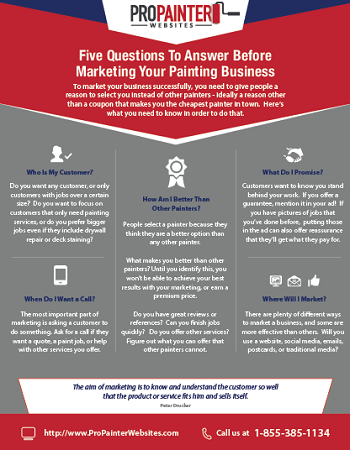Discover How Seasonal Impacts Can Affect The Effectiveness Of Industrial Outside Paint And Learn The Most Positive Times To Make Sure Long Lasting Results For Your Task
Discover How Seasonal Impacts Can Affect The Effectiveness Of Industrial Outside Paint And Learn The Most Positive Times To Make Sure Long Lasting Results For Your Task
Blog Article
Web Content By-Aguilar Celik
When you're intending a commercial outside paint task, seasonal aspects can make or break your outcomes. You'll intend to think about how temperature and humidity impact paint application and drying times. Picking the best season can ensure your paint sticks properly and lasts much longer. Yet which seasons are really the most effective for this type of work? Let's check out the key elements that can influence your task's success.
The Effect of Temperature Level on Paint Application
When you're planning a commercial exterior painting task, the temperature level can dramatically influence how well the paint sticks and dries out.
Ideally, you want to repaint when temperature levels range in between 50 ° F and 85 ° F. If it's also cool, the paint may not treat properly, causing issues like peeling or cracking.
On the other hand, if it's as well warm, the paint can dry out as well promptly, stopping proper attachment and causing an uneven coating.
You ought to also consider the moment of day; morning or late afternoon uses cooler temperature levels, which can be much more desirable.
Always examine the manufacturer's recommendations for the specific paint you're making use of, as they frequently supply assistance on the perfect temperature level variety for optimal results.
Moisture and Its Effect on Drying Times
Temperature level isn't the only ecological factor that influences your business exterior painting job; moisture plays a considerable role too. High moisture levels can slow down drying out times drastically, affecting the total quality of your paint work.
When the air is filled with dampness, the paint takes longer to treat, which can lead to concerns like poor attachment and a greater risk of mildew development. If you're repainting on a particularly damp day, be prepared for prolonged wait times in between layers.
It's essential to keep an eye on regional weather and plan appropriately. Ideally, go for Get More in between 40% and 70% for ideal drying out.
Keeping these factors in mind guarantees your project stays on track and delivers a long-term finish.
Best Seasons for Commercial Outside Painting Projects
What's the best season for your business external painting jobs?
Spring and very early loss are generally your best bets. Throughout these periods, temperatures are moderate, and moisture degrees are frequently lower, developing excellent conditions for paint application and drying out.
Avoid summer's intense heat, which can trigger paint to dry also rapidly, bring about bad adhesion and surface. Likewise, winter season's cool temperature levels can impede proper drying out and treating, running the risk of the longevity of your paint task.
Aim for days with temperatures in between 50 ° F and 85 ° F for ideal results. Remember to examine the regional weather forecast for rain, as wet problems can destroy your task.
Preparation around these elements ensures your paint project runs efficiently and lasts much longer.
Verdict
Finally, intending your business external painting jobs around seasonal factors to consider can make a considerable distinction in the result. By organizing work during the excellent temperature levels and moisture degrees, you'll ensure much better adhesion and drying out times. Keep in mind to watch on local weather prediction and pick the right time of year-- springtime and very early fall are your best choices. Taking https://chanceuafkq.blogdiloz.com/33306660/repaint-your-method-to-a-beautiful-home-how-residence-painters-can-transform-your-room will assist you attain a sturdy and professional finish that lasts.
